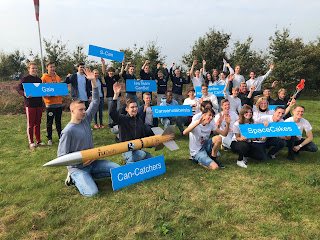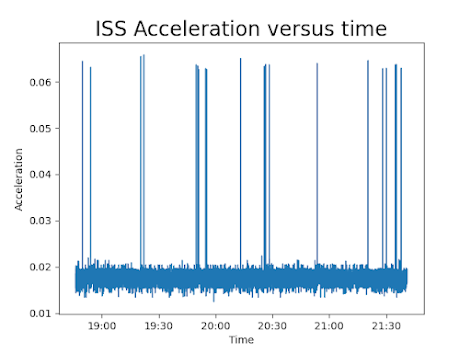On Friday the 16th of September the launch of ESERO CanSat competition 2020-2021 took place. The original launch had been postponed due to covid-19 restrictions, but thankfully measures were relaxed and the launch became possible. Our team, the Canservationists, from the British School in the Netherlands, was there.
Although the progress during covid was challenging, in addition to technical challenges we faced (for which information and how we tackled them can be found here and here), we managed to accomplish our mission (final progress report and a very nice video can be found here) and earn the 3rd place at national level.
Our CanSat was in the first launch window (many thanks to DARE TU Delft team for the great rockets and supporting the launches) and was launched around midday along with three other CanSats.
 |
| Vaggelis putting our CanSat into the rocket |
We were happy to see that our CanSat not only survived the landing, but we were also able to collect all our intended measurements.
What went well:
- Not only did we get our CanSat back in one piece, but it was fully intact as well. This showed that its construction was extremely robust and that our hand-made parachute worked!
- As said, all the sensors worked and collected all the intended measurements (humidity, pressure, temperature, CO2, Total volatile organic compounds - TVOC). Our Arduino code that made all this possible can be found here. You will find the results below.
- The chosen battery was good enough to support the whole process, irrespective of having the CanSat 'on' for quite some time before the launch (see results below).
What worked, but could be improved:
- Our GPS sensor could not update the position fast enough to cope with the extremely fast moves during the launch. This also affected the enabling of our buzzer during landing which was supposed to be triggered by the GPS sensor. Fortunately, we were also measuring the altitude via pressure sensor which, despite a systematic error of some tens of metres, worked very well.
- We managed to receive some of the measurements through telemetry, but not all the time. Given that we cannot change the CanSat itself very much (due to its size and power limitations), a more powerful ground station and a ground antenna with more gain than the Yagi we used may help.
Analysing the results, first we had to identify the data that corresponded to the launch (and especially the landing). To this end, we used the altitude. In the figure below, the spike clearly indicates when the launch took place.
As we can see, our CanSat was 'on' for more than an hour until eventually was launched.
In the diagram below we can see that the GNSS (GPS) sensor could not cope with the abrupt changes (its measurements seem very 'digital').
In the diagram below the temperature measurements are depicted. The abrupt change during the launch is evident. Moreover, the measured temperature decreases as the CanSat goes down, instead of increasing as we normally would expect. This is due to the influence of the rocket during launch.
In the figure below, the CO2 measurements are depicted. No concrete conclusion can be drawn, except from the fact that CO2 concentration increases significantly near the ground.
Finally, the projection of the CanSat trajectory on earth, as captured by the integrated GPS sensor, is depicted below.
We would like to thank our mentors Mr Hurley and Mr Eamonn for their support, as well as Mr Harrison and Mr Van Setten for accompanying us to the launch event.
 |
| Our team |
 |
| The CanSat teams that participated at the launch. |












